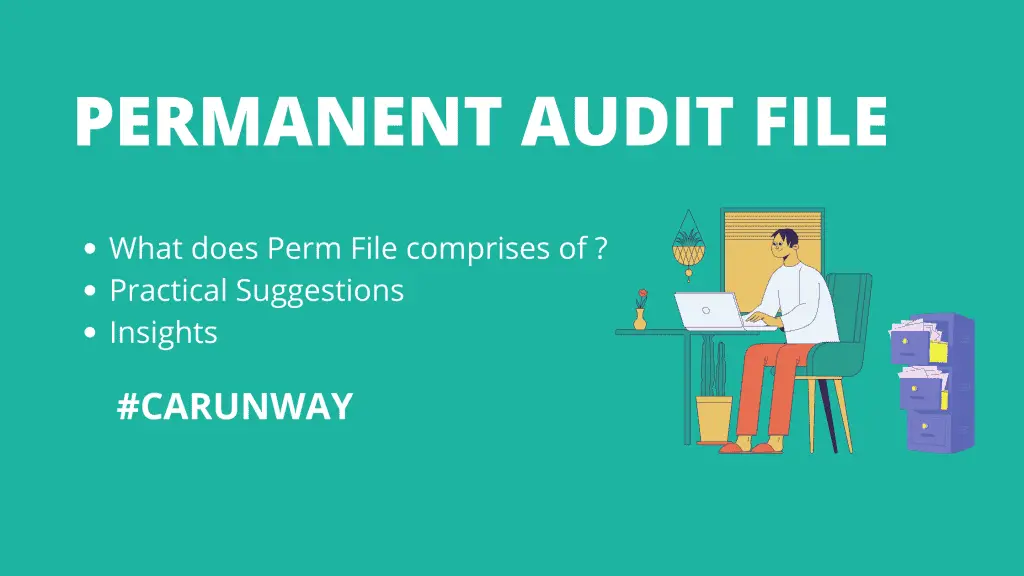The permanent audit file (Perm File) consists of documents or contracts of audit significance beyond the current audit period. Audit documentation is a crucial aspect of planning and performing audits. There is a saying that if the work is not documented, it’s called as not done at all. So, documentation shall be robust in the audit files.
I think the above-cited reasons are enough to stress the importance of audit documentation and Perm Files.

What does Permanent audit file comprises of?
- Entity Incorporation Documents which includes Membership Interest Purchase Agreement, Memorandum of Association or Article of Associations, etc.
- Agreements and contracts entered by the entity such as Long-term debt Contracts, Purchases, Sales Agreements, operation agreements such as security contracts, housekeeping contracts, etc. These agreements are long term in nature. In other words, these agreements tenure will be for more than a year. So, those are form part of Perm Files.
- Engagement Letters
- Lease Agreements
- Employee Stock Options Agreements
- Board of Director Minutes, if those are having significance to subsequent audit periods (For example, Minutes that has resolutions relating to signature authority policy. This is the policy that lists out the competent persons to authorize transactions of different value)
Still, Confused?
Understand how a signature authority policy looks with the attached example here.
Practical Insights of Permanent Audit File:
1) Ensure to have only one audit staff/personnel accountable for maintaining the Permanent Audit Files.
2) Ensure the Perm files are accessible by all the team members. The best way is to have them on some cloud platform to make it accessible in real-time for all members.
3) We can number Perm Files like PF 1, PF 2, etc. If there are any slight changes in a Perm file (let’s say there’s an extension of the debt contract period), then we can number such amendments/changes as PF 1A.
Why do we need to Number Perm Files?
Perm Files are referred to within the current year’s audit files. Let’s say, Debt Contracts are referred to within the debit account balance testing workpaper.
4) Consider adding a prefix of the account balance to the Perm Files number like PFD 1 for debt perm files. An even better idea is to distinguish the numbering for each account balance.
How about an example?
We can designate 1000 series, 2000 series, 3000 series, and 4000 series to assets, debt, expenses, and revenues. If we want to reference a Long term debt agreement, we can refer to it as PFD 2001. PFD 2002 etc.
Prepare an index file to list down the Perm files. This Index would be easy to track down the agreements/contracts.
5) Prepare a summary of the Perm files to include the important terms and conditions. If there are recurring types of contracts, we can probably build some templates for each type of contract.
Conclusion:
Permanent audit files are the files have significance for periods beyond audit period. Such files are to be retained for reference. Leverage the above practical insights to properly save those perm file for later use. Let us know your thoughts on this through your comments!